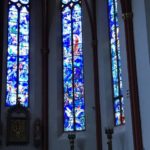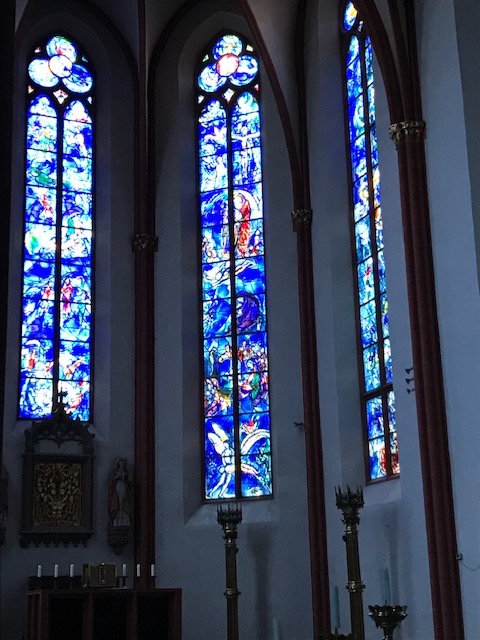When entering any performance, one is typically handed a program. The value of what is detailed on that page gives context to the progression about to be played out. Amongst myriads of possibilities, someone made selections for what you’re about to see. There’s notation about the beginning and how it will end, there are ascriptions and interludes. Your understanding is enhanced with guidance from any program.
In certain masterworks of art there is what is called a “program of images”. This is where an artist makes selections, presenting several images together to create a narrative whole. Viewing that collection takes time, for what the artist offers the viewer is a deliberate opportunity into his broad intention. Not many artists do this; those few who have (like Giotto’s fresco progression in the Scrovegni chapel, or Brunelleschi’s gates of Paradise in Florence) are offering the viewer a sublime visual performance. And examining those collections reveal the scope the artist had to have to make such deliberate choices.

Recently I was guided into the blue hued space in the eastern apse of St. Stephan’s Church in Mainz, Germany where a cycle of images is on display. Marc Chagall sketched out and directed the pattern of images for these huge stained glass verticals when he was 91 years old! He even hand painted a number of the glass pieces. I took in the expanse with wonder. I could pick out bits and clues, and finally I bought the program book written by the former Monsignor Klaus Mayer, who consulted with Chagall in his studio on this grand project.
Chagall grew up in Belorussia into a hardworking Orthodox Jewish home, where the Sabbath was a treasured joy. Treasure and Joy could be called distinctive signatures in this man’s entire oeuvre. The artist lived and managed to work through the Russian Revolution, the sorrow of exile, then the Nazi horrors, the emigration community in NYC, and finally the reconstruction of Europe. He remained true to his unique voice through all this upheaval. He studied in Israel and though he was no longer a practicing Jew, he was an earnest Bible student all his life. “Ever since early childhood, I have been captivated by the Bible. It has always seemed to me and still seems today the greatest source of poetry of all time.”
His words are made all the more real in the images he selected for the viewer in these windows. The overriding theme in his program is the covenants of God, or those binding agreements that God has given all mankind. The Sabbath is just one of them.
The depth of his understanding took my breath away in that space, then in further reading into his motivation. Consider just this: a Jew celebrating the universal rooted from the biblical text, directs a program of images for a Christian church which had been bombed by the war. This is the only example of Chagall’s work we have in any church in Germany. I felt like I was on Holy ground, consecrated by much, much suffering and highlighted with studied biblical light.
I am prompted to add this plug: the book I wrote, Markers, is also a program (though granted of a much minor sort). However, like Chagall’s images, my selected chapters, with images, are prompted by the text. I’ve simplified big ideas, not as a theologian, but as another Bible reader looking at the whole. The synthesis is mine, but the themes are big picture universal. I offer it as another guide into the same grand story that captivated Chagall and so many others.
